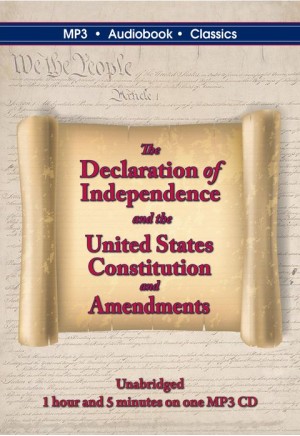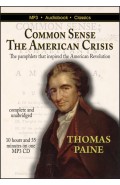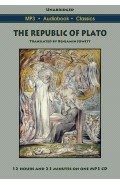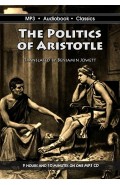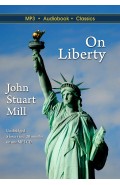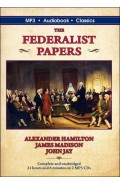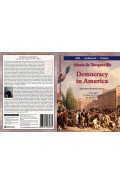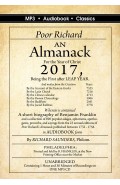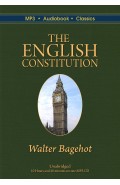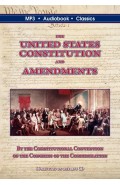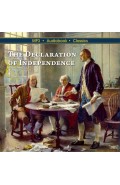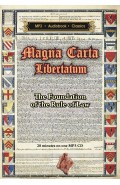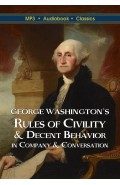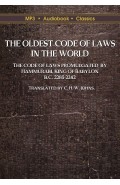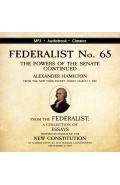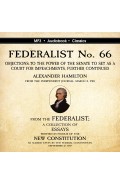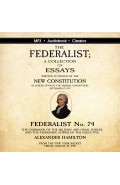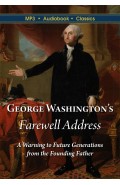| Track | Chapter | Length |
| 1 | 01 - The Declaration of Independence | 9:25 |
| 2 | 02 - The United States Constitution | 32:34 |
| 3 | 03 - Amendments 1-10: the Bill of Rights | 5:29 |
| 4 | 04 - Amendments 11 - 27 | 18:01 |
Notes
Running Time: 1 hour and 5 minutes
Declaration of Independence
Read by: Michael Scherer
Book Coordinator: Hugh McGuire
Meta Coordinator: Kara Shallenberg
United States Constitution and Amendments
Read by: Laurie Anne Walden
Book Coordinator: Laurie Anne Walden
Meta Coordinator: Laurie Anne Walden
Proof Listener: DaveC
Artwork
Cover: Background image - first page of United States Constitution
Inset: Writing the Declaration of Independence, 1776, by Jean Leon Gerome Ferris
Inset: Signing of the Constitution by Thomas P. Rossiter
Inset: United States Postal Service stamp commemorating the Bill of Rights
Insert: Signing of the Constitution by Thomas P. Rossiter
Recordings
These recordings were made using the author’s original published work, which is in the public domain. The readings were recorded by members and volunteers of Librivox.org, which has generously made the recordings available to the public domain. The audio files have been lightly edited and have been engineered using professional audio tools for maximum sonic quality. While Librivox condones the sale and distribution of these recordings, it is not associated with the management or operations of MP3 Audiobook Classics.
- Download the Declaration of Independence online at Gutenberg.org
- Download the United States Constitution eBook online at Gutenberg.org
- Download our PDF datasheet
The Declaration of Independence
When we celebrate the 4th of July in the United State, officially called Independence Day, we are celebrating the signing of The Declaration of Independence, which was ratified by the Second Continental Congress in Philadelphia on July 4, 1776. The American Revolutionary War with the Kingdom of Great Britain had already been underway for over a year at the time. John Adams led the effort to push for independence, which was considered and passed by the congress unanimously on July 2. The document was to be a list of grievances against King George II and the assertion of natural and legal rights designed to explain why the Congress had voted to declare independence. Adams persuaded the drafting committee of five to appoint Thomas Jefferson to compose the declaration, which he did under the editorial supervision of Adams and Benjamin Franklin.
We hold these truths to be self-evident, that all men are created equal, that they are endowed by their Creator with certain unalienable Rights, that among these are Life, Liberty and the pursuit of Happiness.
United States Constitution
The United States Constitution articulates the structure and powers of the United States government and serves as the supreme law of the land. It originally consisted of seven articles. The first three set forth the division of the government into three branches – legislative, executive, and judicial – and the doctrine of the separation of powers. Articles four, five and six embed the concepts of federalism and the rights and responsibilities of the states in relation to the national government. The seventh article established the procedure used to ratify the Constitution. The document, which replaced the Articles of Confederation of 1777, was created by the Philadelphia Convention of 1787, ratified June 21, 1788 and put into force in 1789.
Amendments to the Constitution
As a matter of principle, the original language of the articles and all amendments made thereto remain intact and can only be modified in their operation by a succeeding amendment. This practice was put into force with the first series of ten amendments proposed in 1789 and ratified in 1791 that are known collectively as the Bill of Rights. During the process of ratification, Anti-Federalists pushed for an articulation of rights not defined in the seven articles of the constitution, and several states refused to ratify the Constitution without a Bill of Rights. The first eight amendments define certain additional rights, such as the freedom of speech and the right to bear arms. Amendment nine provides for the eventual recognition of rights not yet enumerated, and amendment ten limits the rights of the federal government to only those granted by the Constitution. There are twenty-seven amendments in all, with four additional still awaiting ratification, with the oldest dating from 1789.
Play sample:
Download our PDF datasheet
| Item Info | |
| EAN - DVD case | 0683422135118 |
| Media | MP3 CD |
| Package | DVD Case |
| Author | Thomas Jefferson Constitutional Convention |
| Recording | |
| Read by | Multiple readers |
| Length | 1 hour and 5 minutes |
| Type of Reading | Collaborative |
The Declaration of Independence and the United States Constitution and Amendments
- Author: MP3 Audiobook Classics
- Product Code: DB-1191
- Availability: In Stock
-
$9.99
Available Options
Related Products
Common Sense and the American Crisis
This disc contains the two pamphlets Paine wrote that inspired the American Revolution: Common Sense..
$11.99
The Republic of Plato
The Republic of Plato is the greatest and best known of Plato’s works and possibly the most influent..
$11.99
The Autobiography of Benjamin Franklin
The Autobiography of Benjamin Franklin is Franklin’s own record of his life, written between 1771 an..
$9.99
The Politics of Aristotle
Aristotle’s Ethics describes the means to the happy life of virtue intended by nature. In Politics h..
$11.99
On Liberty
In 1854 John Stuart Mill began a short essay on the relationship of authority and liberty. Five year..
$9.99
The Federalist Papers
The Federalist, which came to be called the Federalist Papers in the twentieth century, is a remarka..
$14.99
Democracy in America
In 1831 Alexis de Tocqueville and Gustave de Beaumont were sent by the French government to the Unit..
$14.99
Poor Richard's Almanack
Poor Richard’s Almanack was a yearly almanac published by Benjamin Franklin using the pseudonym Rich..
$9.99
The English Constitution
The United Kingdom does not have a single document that sets forth the structure and governance of t..
$11.99
The United States Constitution and Amendments
The United States Constitution articulates the structure and powers of the federal government and se..
$7.99
The United States Declaration of Independence
When we celebrate the Fourth of July in the United States we are remembering the day that the Second..
$4.99
Magna Carta Libertatum
The document commonly called the Magna Carta bears the full title Magna Carta Libertatum, which is M..
$7.99
George Washington's Rules of Civility and Decent Behavior
George Washington's Rules of Civility and Decent Behavior in Company and Conversation is a set of 11..
$7.99
The Oldest Code of Laws in the World
The Code of Hammurabi is a codification of the laws enacted by Hammurabi, the king of Babylonia and..
$9.99
The Federalist No. 65
The Federalist Papers is a series of 85 articles arguing in favor of ratification of the Un..
$2.49
The Federalist No. 66
The Federalist Papers is a series of 85 articles arguing in favor of ratification of the Un..
$2.49
The Federalist No. 74
The Federalist Papers is a series of 85 articles arguing in favor of ratification of the Un..
$2.49
The Silence Dogood Letters
During his teenage years Benjamin Franklin worked as an apprentice printer at his older brother’s pr..
$8.99
George Washington's Farewell Address
After serving two terms as the first president of the United States, George Washington decided not t..
$7.99

